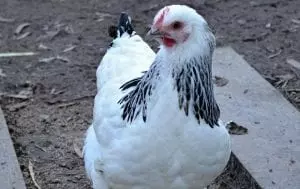Sweet potatoes are one of the easiest and most handy vegetables to have in your garden. They’re mostly grown for the delicious & nutritious tubers, but the leaves can be eaten too. Sweet potato leaves are high in fibre, rich in numerous vitamins, and are used as a spinach in many parts of the world. In this article I’m going to give you my five top tips on how to grow a ton of sweet potato.
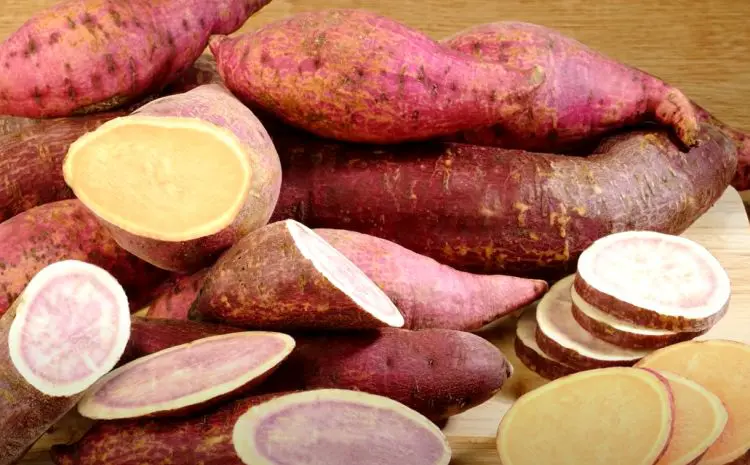
Surprisingly, sweet potato is not related to potato. Sweet potato is part of the morning glory plant family, which are all vigorous climbers known mostly for their flowers. There are a number of different varieties you can try growing. The best known has orange skin and orange flesh, and is thought to be the sweetest. There is also a white skin with white flesh, a purple skin with purple flesh, and a purple skin with white flesh. If you live in a cold climate, you may like to seek out faster-growing varieties which are more suited to your climate.
Five Tips on How to Grow a Ton of Sweet Potato
Propagating. There are several ways to propagate sweet potato plants. You can grow them from a full tuber, by simply planting one straight into a garden bed or pot. Alternatively, you can use half a tuber to grow ‘slips’ which can then be planted out. Sit the piece of sweet potato upright in a glass of water and wait for it to sprout- this should take about a month. Like chokoes and standard potatoes, shoots will appear and grow rapidly. These shoots are known as ‘slips’, and each one will become a new plant. Once they are about 6″ long you can cut them off and plant them out. Keep them well watered when they are new plantings and they will soon strike. Sweet potato is a strong, vigorous plant that takes root easily, so these are both reliable growing methods.

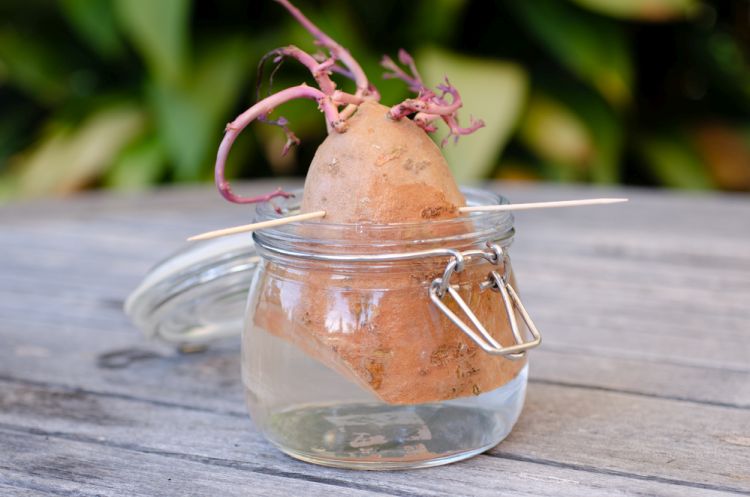
Planting. Think carefully when positioning your sweet potato, because when it’s grown in the ideal climate (warm subtropical) it can take over. It may be best to contain it to one area or garden bed so you can keep it under control.
This vigorous growth needs to be taken into account if you’re thinking of planting it in with other crops. If left unchecked, it can easily smother out other veggies. The best time to interplant sweet potato is when you have small new slips. The slips can be placed around other short-lived annual crops. By the time the annuals die off, the sweet potato will be ready to take over the bed.
Sweet potato is best grown in full sun, and it can cope with the strength of the sun through a subtropical summer. If part shade is your only option, it will still grow but may give a smaller yield. As I mentioned already, sweet potato is a vine which grows very quickly. It can easily be trained up a trellis to keep it in check, just be careful you don’t allow it to shade out other plants. There are advantages to letting it sprawl out if you wish. It can be a good weed suppressant, plus the runners will take root, make new plants and increase your harvest.

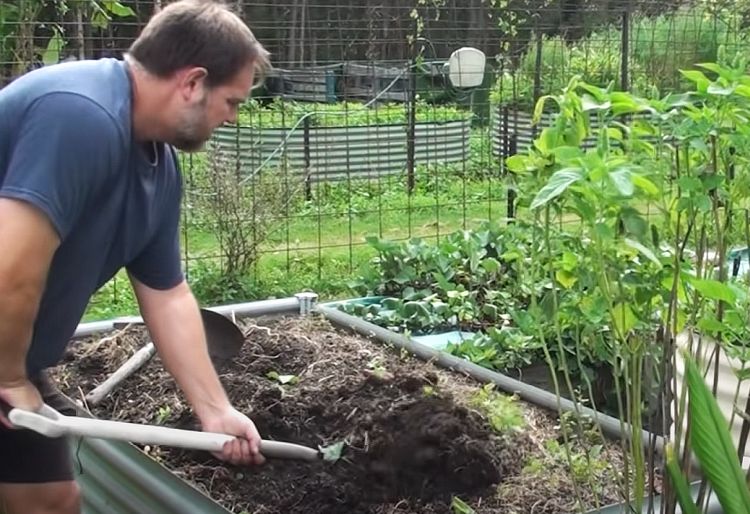
Soil Texture. Sweet potatoes are similar to most root crops in that they need crumbly or loose soil in order to produce decent tubers. Hard, compacted or clay soil is simply not compatible with this crop. They need plenty of organic matter too, so be sure to add some compost and/or manures before planting. If your soil is too hard or lumpy, loosen the top 30cm (12″) by digging it through with a fork or spade. Sweet potato often grows up near the surface of the soil, and hard soil will force the tubers up even higher. This can cause them to protrude above the soil surface, which can make them perish, crack, rot, or be attacked by rodents.
Fertilise at the time of planting, but not afterwards. The plants need to root down and grow their tubers, which are actually their own store of food. Over-fertilising means the plants will not need to grow their own food source. Instead, they will direct too much energy into leaf growth.

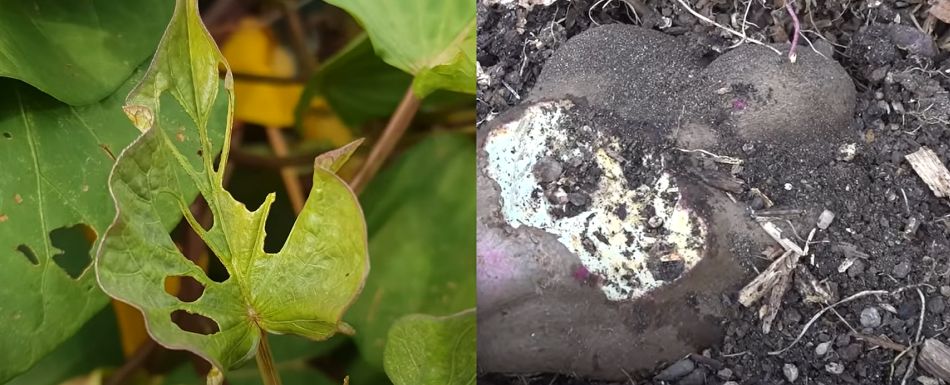
Pest & Disease Control. Sweet potato is a very hardy vegetable, and is one of the few veggies that can grow through a subtropical summer with minimal pest trouble. You’ll probably get some holes munched out of the leaves by grasshoppers and caterpillars, but don’t worry about it unless the plant is getting completely stripped. Rodents can sometimes target sweet potato, so you can expect some crop loss here and there. Even with lots of insect activity, the average sweet potato plant will be fine on its own and shouldn’t need any direct pest management.
Sweet potato can be grown in the same location for several seasons in a row. It’s a good idea to plant sweet potato in a different area every 2 or 3 years, mainly to prevent an accumulation of soil-borne pests and diseases. Slugs, borers, nematodes and fungal diseases can build up over time, but will be drastically reduced by simple crop rotation.

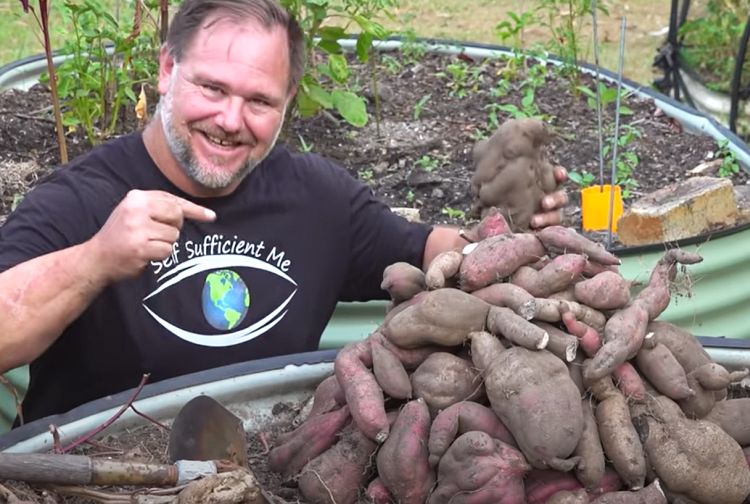
Harvesting. In order to harvest sweet potato, first remove all the vine growth above the soil surface. Next, dig or fork out all the tubers & roots, being careful not to pierce the skins.
Separate out all the good tubers under about 8″ long and keep them aside for eating. (Tubers larger than this are generally too fibrous and lacking in flavour). Good tubers should feel firm and heavy. Those that are lightweight and spongy are no good. After harvesting, lay the sweet potatoes out in the sun for about six hours. This will help them store better, because the skins will dry out and any broken spots will become sealed.

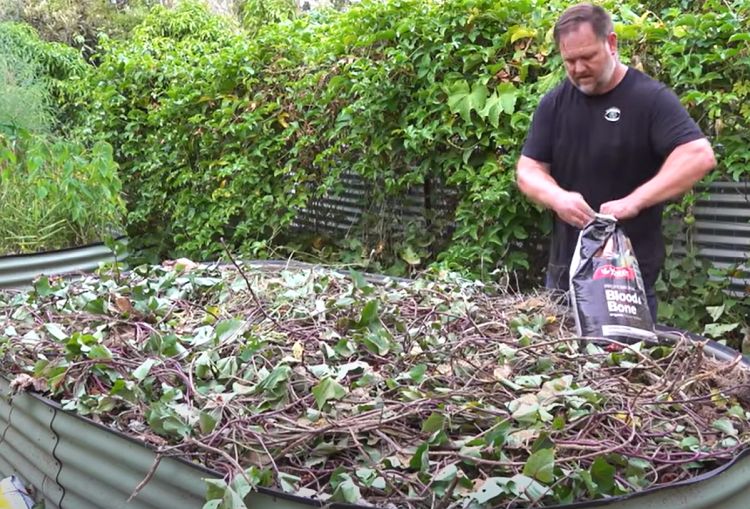
Once all the harvesting is done, you can prepare for the next crop. Roughly chop up the discarded sweet potatoes along with the saved roots, and spread these evenly over the bed. Some will sprout to form new plants and some will decay and so add organic matter to the soil. (This is another way to bury your vegetable scraps to improve your soil & minimise waste). Throw all the old vines over the top- these too will compost down and enrich the soil for the benefit of the next crop. Sprinkle a layer of blood and bone (bonemeal) and/or manure, then a layer of compost, and finally mulch on top. Leaves, wood chip, lucerne or sugar cane mulches are all suitable. Too see how this is done, watch the video below.



